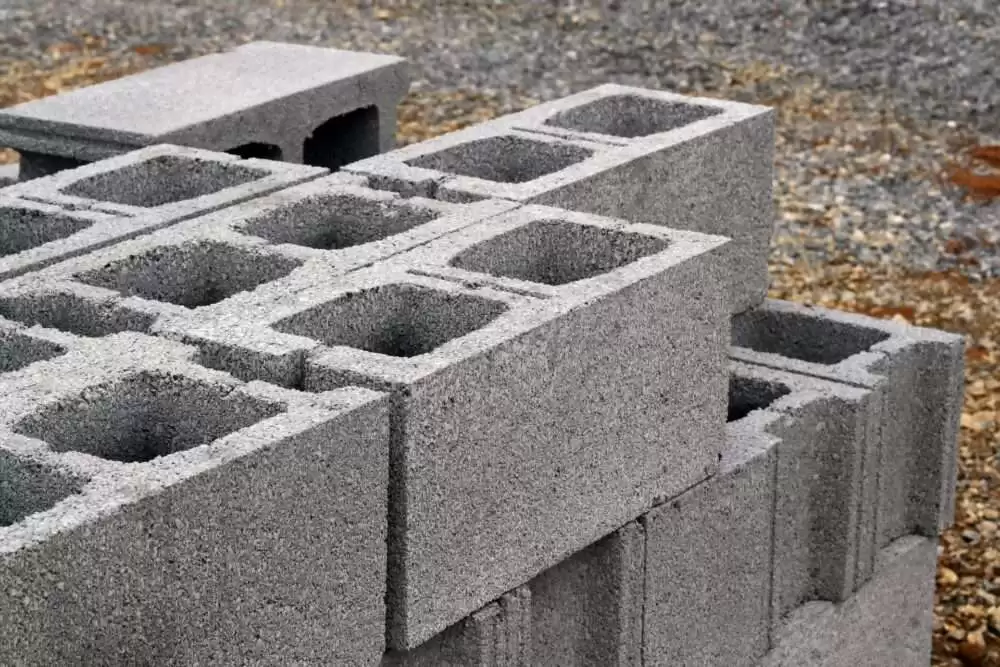Comparison of cement blocks and concrete blocks,
Are cement blocks and concrete blocks the same?
Many people assume they are, but the truth is that they have several key differences.
This article will detail the composition, cost, strength, durability,
weight and appearance of cinder blocks and concrete blocks.
After reading on, you will understand why it is important to know the distinction between the two when they are used for construction purposes.
Keep reading to learn more about the pros and cons of cinder and concrete blocks.

What is Cinder Block?
Cement block is a building material made of concrete, sand, and sometimes gypsum.
They are commonly used for construction projects such as foundations, walls, and outdoor yards.
Cement blocks are lightweight and easier to work with than building materials,
such as poured concrete or bricks and mortar.
Cement blocks contain four main components: Portland cement, water, sand and coal fly ash or ash.
Rollers provide the structure that holds the other components together and add strength and durability to the final product.
Portland cement also binds all components together while providing additional strength and stability.
The water allows the Portland cement to combine with the other ingredients to form a solid bond within the cinder block.

Finally, the sand helps fill any gaps between components for a denser block that can handle more pressure and weight when used in construction.
The size of the cement block depends on its intended use,
with standard sizes ranging from 4″ x 8″ x 16″ to 12″ x 24″ x 32″.
Cement blocks come in different colours, textures, shapes and sizes to suit different needs in construction projects.
They also have many faces that can be split and cut into different shapes to fit specific designs.
In addition to its strength characteristics, it is cost effective compared to other building materials.

What is concrete block?
Concrete block, called cinder block or concrete masonry unit (CMU),
is a rectangular block made of concrete and aggregate materials.
Generally, concrete blocks are made from a mixture of Portland cement,
water, and aggregates such as sand, gravel, and crushed stone.
Unlike traditional concrete blocks made from combustible materials such as coal and limestone,
concrete blocks are durable and long-lasting.
Concrete blocks are ideal for a variety of building projects. They are strong and versatile, making them great for retaining walls, foundations and other construction work.
Concrete blocks are also well suited for use as building materials in certain parts of the home,
such as interior walls and floors.
Concrete blocks are also fire resistant, which means they provide an extra layer of safety for your home or business.
In addition, concrete blocks can fit almost any design or shape,
and this provides a lot of design flexibility when constructing walls and other construction work.
Concrete blocks are mass produced in factories and are available in a variety of shapes, sizes and strengths.
Concrete blocks are also affordable and easy to find, making them popular with builders and homeowners.

Differences between concrete blocks and concrete blocks
Cement blocks and concrete blocks are commonly used building materials in many construction projects.
Although both are made of concrete, they differ in composition, appearance, and weight.
Understanding the differences between these two materials is crucial when deciding which one is best for your project.
In terms of composition, cement blocks are made from a mixture of coal ash and water.
After the mixture is poured and formed into a mould,
it is cured and steam-heated to give it a more solid and dense structure.
The resulting product is lighter in weight and provides better insulation and sound absorption than traditional concrete blocks.
Conversely, concrete blocks are manufactured using Portland cement, water and aggregates.
Like sand and stone, this mixture is then poured, molded and left to dry and cure.
The result is a much denser and heavier material than slag blocks.
This makes them better suited for heavy loads and high load applications.
In terms of appearance, cement blocks are usually gray and have a coarse texture.
Conversely, concrete blocks can be found in different colors and textures as they can be dyed and treated in many different ways.
Finally, cement blocks are much lighter than concrete blocks,
The former weighs about two pounds while the latter can easily weigh up to eight pounds.
As such, cement blocks are much easier to handle, cut and transport.
This makes it an ideal choice for small projects or DIY projects.
In conclusion, understanding the differences between concrete and cement blocks is essential when choosing the right material for your project.
Cement blocks are lighter and provide better insulation and sound-absorbing properties,
while concrete blocks are heavier and better suited to carrying heavy loads.
Ultimately, the choice of materials should be based on your project’s specific needs.
For more architectural news


 العربية
العربية